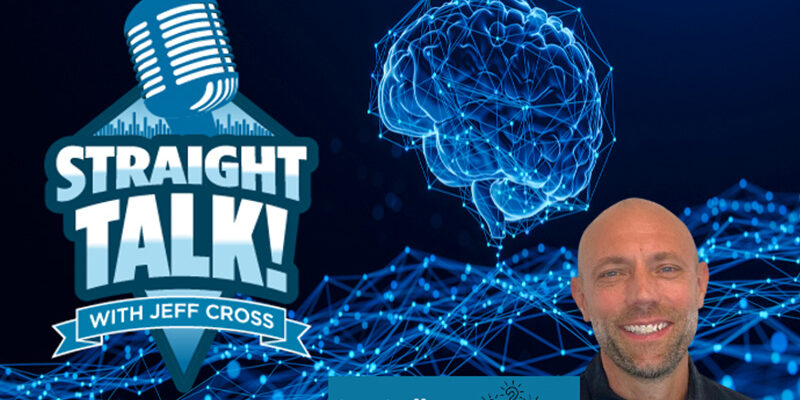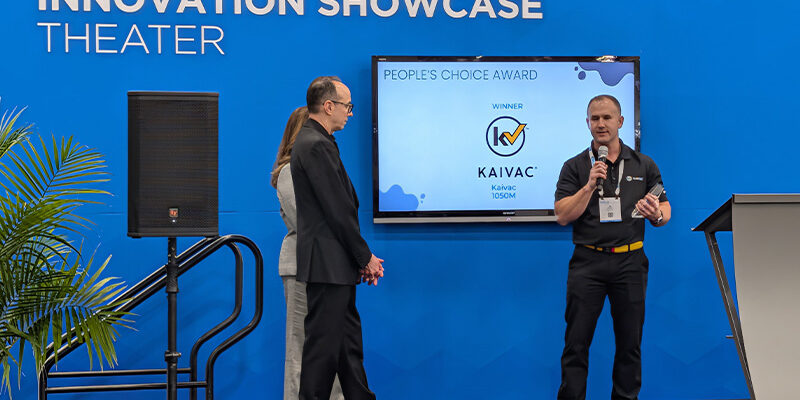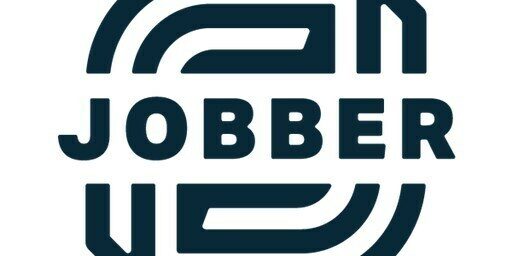5 Tips for Better Moisture Mapping

By Amanda Hosey
Moisture mapping is the foundation and core of water damage restoration since all planning for a job is created through and revolves around our understanding of where damage lies. A whopping 97% of restoration companies perform water damage work, and of those companies, 62% consider it their most profitable service, according to our 2019 Restoration Benchmarking Survey Report (found in the July 2019 issue of Cleanfax). We reached out to experts on the skill to get their opinions on the most important ways to be successful in moisture mapping.
1 | Be discerning
“There are different meters for different materials and situations. Understanding which meters are to be used for which material, and the meters’ limitations must be understood by technicians doing this work,” according to Richard Driscoll, an IICRC Master Restorer and industry instructor.
Much of successful moisture mapping comes down to using the right tools in the right situations. The experts say that depending on one type of tool is ineffective, and a collection of tools is needed for the best possible outcomes.
“Thermal imaging cameras are a good tool for quick scanning, but technicians need to remember a thermal imaging camera measures temperature differences, not moisture content,” says Driscoll. “If a surface is wet and evaporation is occurring, then there will be a different temperature on that surface when compared to a dry surface. So, the surface could be wet, but all areas that show temperature differences need to be further evaluated with moisture meters.”
An important tool in moisture mapping is a non-penetrating moisture meter, which uses radio waves to look for moisture.
Driscoll says, “The major advantage of a non-invasive meter is it does not create any damage, so it is the perfect initial inspection meter. This meter is really effective for looking ‘under’ a vinyl floor to determine if the sub-floor is wet.”
However, it’s important to see the limitations of non-invasive meters, according to Driscoll. He points out the possibility of “false positive” readings, “which would indicate wetness, when what the meter is finding is ‘conductivity.’” He says these occur when the meter reads conductivity (of metal) as moisture when there actually is none.
Jeremy Reets, owner and instructor of Reets Drying Academy agrees that restorers need to avoid over relying on non-invasive meters.
“Thorough moisture mapping means finding elevated moisture content wherever it may be hiding in the assemblies we are drying. This is where our industry could use some improvement,” Reets reports. “Too often I see overuse of non-penetrating moisture meters, hammer probes in subfloors, and no moisture readings on the most challenging areas such as sill plates and the subflooring underneath them. This example requires using something to extend the reach of our meters, most often that is stainless steel screws.”
Reets adds, “This strategy for moisture reading has been done for more than 20 years, just not commonly enough. Setting two stainless steel screws to pass through the wet interface between a sill plate and the subfloor is a simple but necessary step in thorough moisture mapping.”
See the “Using penetrating meters” sidebar for more on their use.
Using Penetrating Meters
from Richard Driscoll
To get true moisture readings, technicians need to use a penetrating meter. A penetrating meter actually goes into the material that is being sampled. There are two primary types of penetrating meters: the pin type and the hammer probe.
The pin-type meter uses short pins, about 1-inch long. These pins are pushed into the material being sampled, and the meter then provides a moisture content reading.
The hammer probe comes with pins of various lengths: 3 inches, 5 inches, 7 inches, depending upon the meter manufacturer. The hammer probe is what its name indicates. Pins are “hammered” into the material being sampled. The pins in the hammer probe are insulated, so the readings are only from the ends of the pins. This allows for determining the amount of moisture and the depth of this moisture in a material.
For example, using a hammer probe on a two-by-four, the technician could determine if the entire piece of lumber was affected or if the moisture only penetrated a half inch (or 1 inch, etc.) into the material. And as the two-by-four dries, the hammer probe will show this drying.
2 | Be consistent
If you have multiple meters of the same type, it’s important not to switch between them on a job. Using the same tools throughout is important for successful mapping because different meters won’t necessarily measure in the same way.
“Use the same moisture meters and thermohygrometers throughout the entire loss,” recommends Chuck Dewald III, owner of Dewald Academy of Drying. “All meters are not created equal and most meters have entirely different scales among different brands.”
Reets seconds this need for consistency in equipment use. He says, “Consistent moisture mapping means correctly using the same meters in the same locations to identify clear trends in the drying process from the beginning of the project to the end.”
3 | Monitor continually
Likely the most important aspect of drying is monitoring and adjusting based on continuous moisture monitoring. Moisture mapping doesn’t end after the initial inspection.
“It drives me crazy to hear the stories of restorers setting up the equipment and then coming back in three to four days to pick up everything (whether it is dry or not). We need to stop these habits and change this standardized way of thinking,” Dewald says. “Be there every single day on that loss to record moisture mapping and psychrometric data progress and make changes as needed.”
Driscoll explains the needed monitoring process: “There are two important inspection/monitoring tasks that must be completed on a daily basis, or maybe more frequently depending upon the particulars of the loss: monitoring what is happening with the air (a record of drying conditions) and monitoring what is happening with the actual structural materials that were affected (moisture mapping).”
He adds, “The only way to verify we have accomplished the objective is to measure and record the moisture content in everything that was affected and continue drying until all affected structural materials have been returned to the pre-loss condition.”
And Dewald points to the need for baseline goals (see #5 for more on this). “Measure and record dry standard values for all different types of materials affected for a target baseline. This changes for all materials in different regions and different times of the year.”
4 | Document everything
All too often restorers fail to document their measurements properly, which leads to conflicts with adjusters and problems with payment. No good comes from poor documentation.
“Moisture mapping and even the psychrometric data should tell a thorough and detailed story of the water loss. The quality of this story is directly correlated to the type of information gathered on any loss and, more importantly, the evaluations that can be made with this gathered information or data,” explains Dewald. “The better or more compelling this story is, the greater the interaction will be with the insurance carriers in all areas. Also, more confidence and trust by the insured will be established in your company’s ability and processes.”
Since payment is dependent on successful job completion, verification of that success is of the utmost importance. Says Driscoll, “Moisture mapping is probably the most inspection/monitoring-heavy task technicians perform. The reason it’s so important: The recorded information on properly done moisture maps will show the affected structure is now dry…. At the end of the job, if done properly, documentation proves that the drying job has been successfully completed.”
Bonus Tip: Communicate With Clients
from Chuck Dewald III
Involve the insured in your gathering of the moisture mapping and psychrometric data as much as possible (especially on the front end and back end of the loss). Most restorers do not take enough time to convey to the insured the reasoning or processes behind what they are doing.
5 | Strategize
No two jobs are the same, and the planning for them shouldn’t be treated as such. Our experts point to developing a strategy and setting goals as essential to successful moisture mapping and drying.
“Become a professional evaporator! Your chamber conditions (no matter what the size of the chamber) are what’s driving the evaporation rate and moisture content change within the materials. Most restorers have no daily targets they are evaluating within the drying chamber for their psychrometric readings,” says Dewald. “We have daily minimum E3 chamber targets set for each day of the loss for all different types of drying equipment, set ups, and possible outside conditions. This value gives meaning and justification to the psychrometric data and lets you know when specific changes need to be made.
“Know what the numbers mean, and quit recording the data simply for the sake of writing them down.”
Reets suggests planning always begin with the worst areas: “Ask yourself what the most-difficult-to-dry areas will be in your project. Those are the areas you must create a moisture mapping strategy for. If they are the hardest areas to dry, likely they are also going to be the last areas to dry. It’s also the exact areas where your moisture mapping should focus.”
Amanda Hosey is the managing editor of Cleanfax. She has worked as an editor and writer for more than six years, including four years with Cleanfax. Reach her at [email protected].












